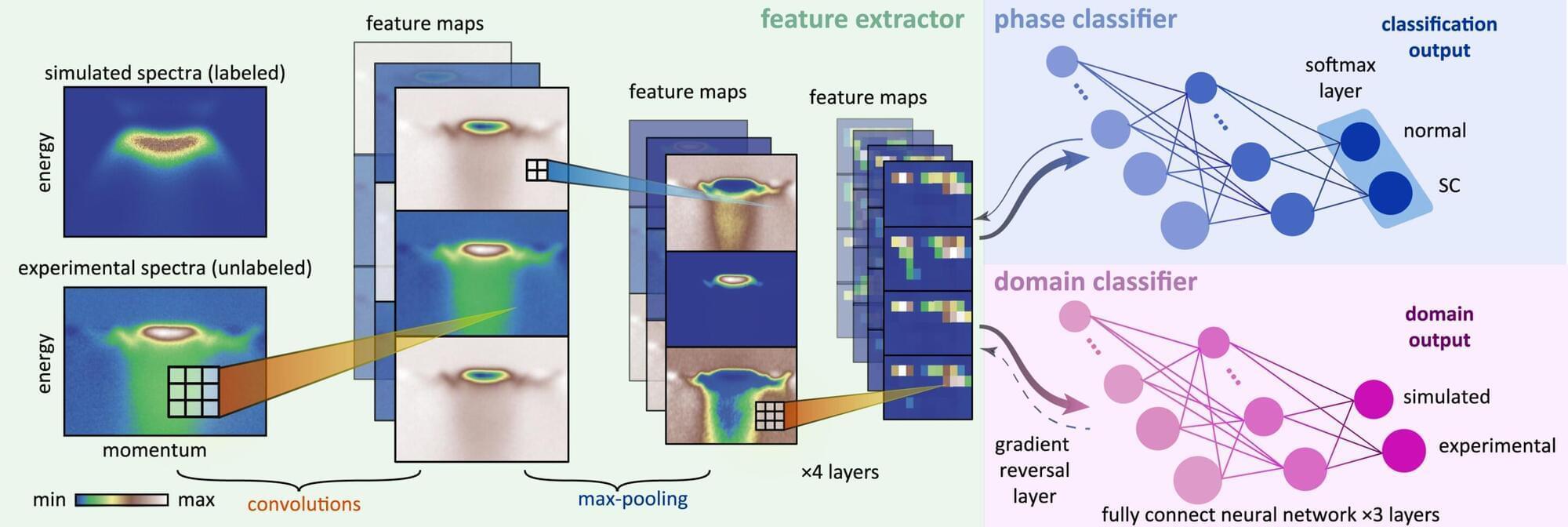Using artificial intelligence shortens the time to identify complex quantum phases in materials from months to minutes, finds a new study published in Newton. The breakthrough could significantly speed up research into quantum materials, particularly low-dimensional superconductors.
The study was led by theorists at Emory University and experimentalists at Yale University. Senior authors include Fang Liu and Yao Wang, assistant professors in Emory’s Department of Chemistry, and Yu He, assistant professor in Yale’s Department of Applied Physics.
The team applied machine-learning techniques to detect clear spectral signals that indicate phase transitions in quantum materials—systems where electrons are strongly entangled. These materials are notoriously difficult to model with traditional physics because of their unpredictable fluctuations.






